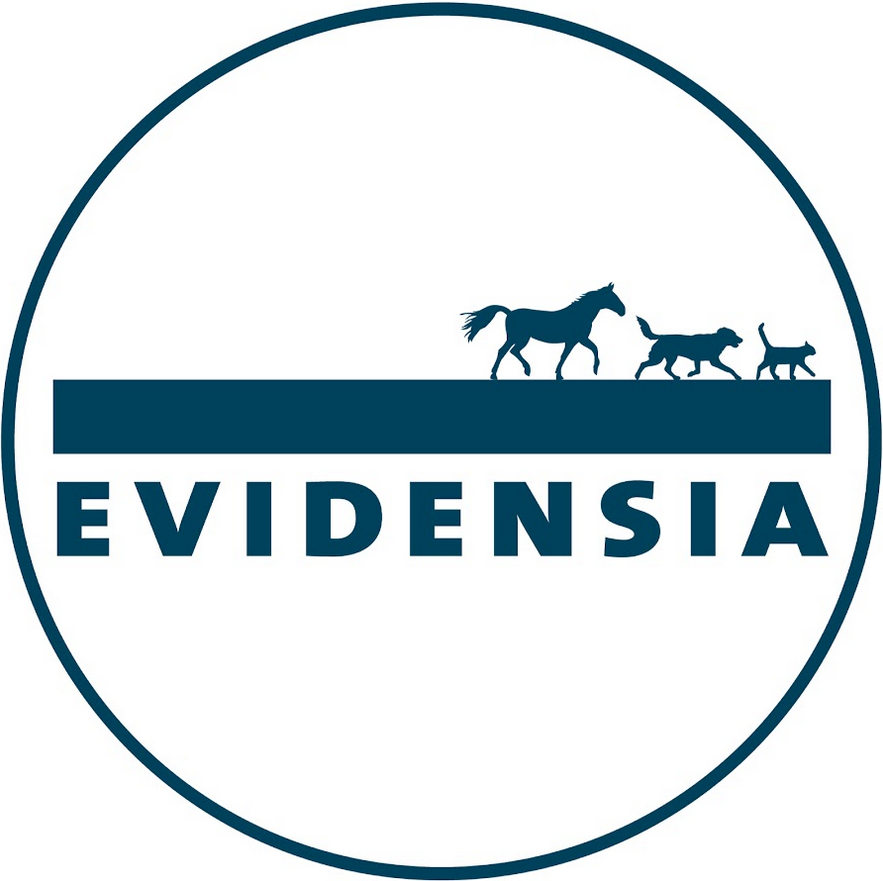Combination therapy
No results were found for your selected species
Prednidale
Active substance
ATC code
Species
Dogs.
Indications
For the treatment of inflammatory and allergic diseases, including some autoimmune diseases and some neoplastic conditions, in dogs. Inflammatory, allergic and autoimmune processes may be involved in cutaneous, alimentary, respiratory, musculo-skeletal and haematological manifestations of disease.
Dose to be administered and administration route
For oral administration in dogs.
0.1 - 2.0 mg per kg bodyweight per day.
A single administration may be sufficient for certain conditions such as anaphylaxis, but for more general treatment, administration for one to three weeks at the above dosage levels may be required. Dosage levels should be monitored carefully to ensure that the lowest effective dose is used. To minimise the risk of adrenal insufficiency, alternate day treatment may be implemented, using dose levels that adequately control the symptoms. Dogs should be dosed in the morning to coincide with the endogenous cortisol peak.
Higher dose levels may be used in animals with tumours responsive to corticosteroid therapy. In these cases, the dosage level is related to the surface area of the animal and dose levels of between 20 mg per m2 and 60 mg per m2 have been found to be useful. The potential risks associated with these high dose levels should be assessed before commencing treatment.
Adverse reactions
Anti-inflammatory corticosteroids, such as prednisolone, are known to exert a wide range of side effects. Whilst single high doses are generally well tolerated, they may induce severe side-effects in long term use. Dosage in medium to long term use should therefore generally be kept to the minimum necessary to control symptoms.
The significant dose related cortisol suppression noticed during therapy is a result of effective doses suppressing the hypothalamic-pituitary-adrenal-axis. Following cessation of treatment, signs of adrenal insufficiency can arise, and this may render the animal unable to deal adequately with stressful situations.
The significant increase in triglycerides noticed can be a part of possible iatrogenic hyperadrenocorticism (Cushing’s disease) involving significant alteration of fat, carbohydrate, protein and mineral metabolism, e.g. redistribution of body fat, increase in body weight, muscle weakness, wastage and osteoporosis may result. Cortisol suppression and an increase in plasma triglycerides is a possible side-effect of medication with corticoids. Weight gain has been reported in very rare cases, in post-authorisation experience.
Changes in biochemical, haematological and liver parameters, such as significant effects on alkaline phosphatase (increase), lactate dehydrogenase (decrease), aspartate transaminase (decrease), albumin (increase), eosinophils, lymphocytes (decrease), segmented neutrophils (increase), and serum hepatic enzymes (increase) are probably associated with the use of prednisolone. Changes in haematological parameters have been reported in rare cases and changes in biochemical and liver parameters in very rare cases, in post authorisation experience. Polyuria and polydipsia have been reported in rare cases and polyphagia in very rare cases, in post authorisation experience and may be caused by systemically administered corticosteroids, particularly during the early stages of therapy. Sodium and water retention and hypokalaemia may be caused by some corticosteroids in long term use. Hypokalemia has been reported in very rare cases, in post authorisation experience.
Deposition of calcium in the skin (calcinosis cutis) has been caused by systemic corticosteroids.
Wound healing may be delayed during corticosteroid use and the immunosuppressant actions may weaken resistance to, or exacerbate existing infections.
Gastrointestinal ulceration has been reported in very rare cases in animals treated with corticosteroids in post authorisation experience and may be exacerbated by steroids in animals given non-steroidal anti-inflammatory drugs.
Inhibition of longitudinal growth of bones; skin atrophy; diabetes mellitus; behavioral disorders (excitation and depression), pancreatitis, decrease in thyroid hormone synthesis; and increase in parathyroid hormone synthesis are o. ther adverse reactions that may occur. Excitation has been reported in very rare cases, in post authorisation experience.
The frequency of adverse reactions is defined using the following convention: very common (more than 1 in 10 animals treated displaying adverse reaction(s)) common (more than 1 but less than 10 animals in 100 animals treated ) uncommon (more than 1 but less than 10 animals in 1,000 animals treated) rare (more than 1 but less than 10 animals in 10,000 animals treated) very rare (less than 1 animal in 10,000 animals treated, including isolated reports).
Dispensing
POM-V - Prescription Only Medicine – VeterinarianSUMMARY OF PRODUCT CHARACTERISTICS
1. NAME OF VETERINARY MEDICINAL PRODUCT
Prednidale 25 mg Tablets for Dogs
2. QUALITATIVE AND QUANTITATIVE COMPOSITION
Active ingredient
Prednisolone 25 mg
For a full list of excipients, see section 6.1.
3. PHARMACEUTICAL FORM
Tablet.
White, 11 mm circular tablets.
4. CLINICAL PARTICULARS
4.1 Target species
Dogs.
4.2 Indications for use, specifying the target species
For the treatment of inflammatory and allergic diseases, including some autoimmune diseases and some neoplastic conditions, in dogs. Inflammatory, allergic and autoimmune processes may be involved in cutaneous, alimentary, respiratory, musculo-skeletal and haematological manifestations of disease.
4.3 Contraindications
Do not use in animals with renal insufficiency, diabetes mellitus or corneal ulceration.
Do not use in animals receiving vaccines containing live organisms. Do not use in pregnant animals.
4.4 Special warnings for each target species
There are no special warnings required for the target species.
4.5 Special precautions for use
i. Special precautions for use in animals
Pharmacologically-active dose levels may lead to atrophy of the adrenal cortex, resulting in adrenal insufficiency. This may become apparent particularly after withdrawal of corticosteroid treatment. Adrenal insufficiency may be minimised by institution of alternate-day therapy if practical. The dosage should be reduced and withdrawn gradually to avoid precipitation of adrenal insufficiency.
ii. Special precautions to be taken by the person administering the veterinary medicinal product to animals
Gloves should be worn to administer the product and you should wash hands immediately after administration of the product.
In the event of accidental ingestion, particularly by a child, seek medical advice and show the doctor the label or package leaflet.
iii. Other precautions
No special precautions required.
4.6 Adverse reactions (frequency and seriousness)
Administration of single high doses are generally tolerated well, but medium to long-term use may provoke reactions.
Corticosteroid therapy may lead to increased time in the healing of wounds and to a reduction in the ability of the body to resist infection. Appropriate antiinfective therapy may be required.
4.7 Use during pregnancy, lactation or lay
Corticosteroids are not recommended for use in pregnant animals. Studies in laboratory animals have shown that administration during early pregnancy may cause foetal abnormalities. Administration during the later stages of pregnancy may cause abortion or early parturition.
Insignificant amounts of prednisolone are generally eliminated in the milk of lactating animals, and therefore such use is not contraindicated.
4.8 Interaction with other medicinal products and other forms of interaction
There are no known interactions of significance in veterinary medicine.
4.9 Amounts to be administered and administration route
For oral administration in dogs.
0.1 - 2.0 mg per kg bodyweight per day.
A single administration may be sufficient for certain conditions such as anaphylaxis, but for more general treatment, administration for one to three weeks at the above dosage levels may be required. Dosage levels should be monitored carefully to ensure that the lowest effective dose is used. To minimise the risk of adrenal insufficiency, alternate day treatment may be implemented, using dose levels that adequately control the symptoms. Dogs should be dosed in the morning to coincide with the endogenous cortisol peak.
Higher dose levels may be used in animals with tumours responsive to corticosteroid therapy. In these cases, the dosage level is related to the surface area of the animal and dose levels of between 20 mg per m2 and 60 mg per m2 have been found to be useful. The potential risks associated with these high dose levels should be assessed before commencing treatment.
4.10 Overdose (symptoms, emergency procedures, antidotes), if necessary
Signs of overdosage should be treated symptomatically.
4.11 Withdrawal periods
Not applicable.
5. PHARMACOLOGICAL PARTICULARS
Pharmacotherapeutic group: Corticosteroid for systemic use. ATC Vet Code: QH02AB06
5.1 Pharmacodynamic properties
Prednisolone is a synthetic glucocorticoid with anti-inflammatory and immunosuppressant properties. It possesses only slight mineralocorticoid activity. Prednisolone is used to suppress the clinical manifestations of a wide range of disorders.
5.2 Pharmacokinetic properties
Prednisolone is readily absorbed from the gastro-intestinal tract. Peak plasma concentrations are reached one to two hours after administration, with a plasma half-life of between two and three hours. It is extensively bound to plasma proteins. It is excreted in the urine as free and conjugated metabolites and parent compound. It has a biological half-life of several hours, making it suitable for alternate-day therapy.
6. PHARMACEUTICAL PARTICULARS
6.1 List of excipients
Lactose monohydrate
Maize starch
Pre-gelatinised maize starch
Stearic acid Purified talc
Magnesium stearate
6.2 Incompatibilities
None known.
6.3 Shelf life
Shelf life of the veterinary medicinal product as packaged for sale: 48 months.
6.4 Special precautions for storage
Do not store above 25°C. Store in tightly closed original container. Store in a dry place.
6.5 Nature and contents of immediate packaging
Polypropylene containers with low density polyethylene push-fit tamper evident closures containing 100 tablets.
6.6 Special precautions for the disposal of unused veterinary medicinal product or waste materials derived from the use of such products, if appropriate
Any unused veterinary medicinal product or waste materials derived from such veterinary medicinal products should be disposed of in accordance with local requirements.
7. MARKETING AUTHORISATION HOLDER
Dechra Limited
Snaygill Industrial Estate
Keighley Road
Skipton
North Yorkshire
BD23 2RW
United Kingdom
8. MARKETING AUTHORISATION NUMBERS
Vm 10434/4008
9. DATE OF FIRST AUTHORISATION
19 November 2007
10. DATE OF REVISION OF THE TEXT
September 2016
![]() 29 September 2016
29 September 2016

| Art. Nr. | 10434/4008 |
|---|---|
| EAN | 5055031418916 |
 TRUSTED SOURCE
TRUSTED SOURCE








